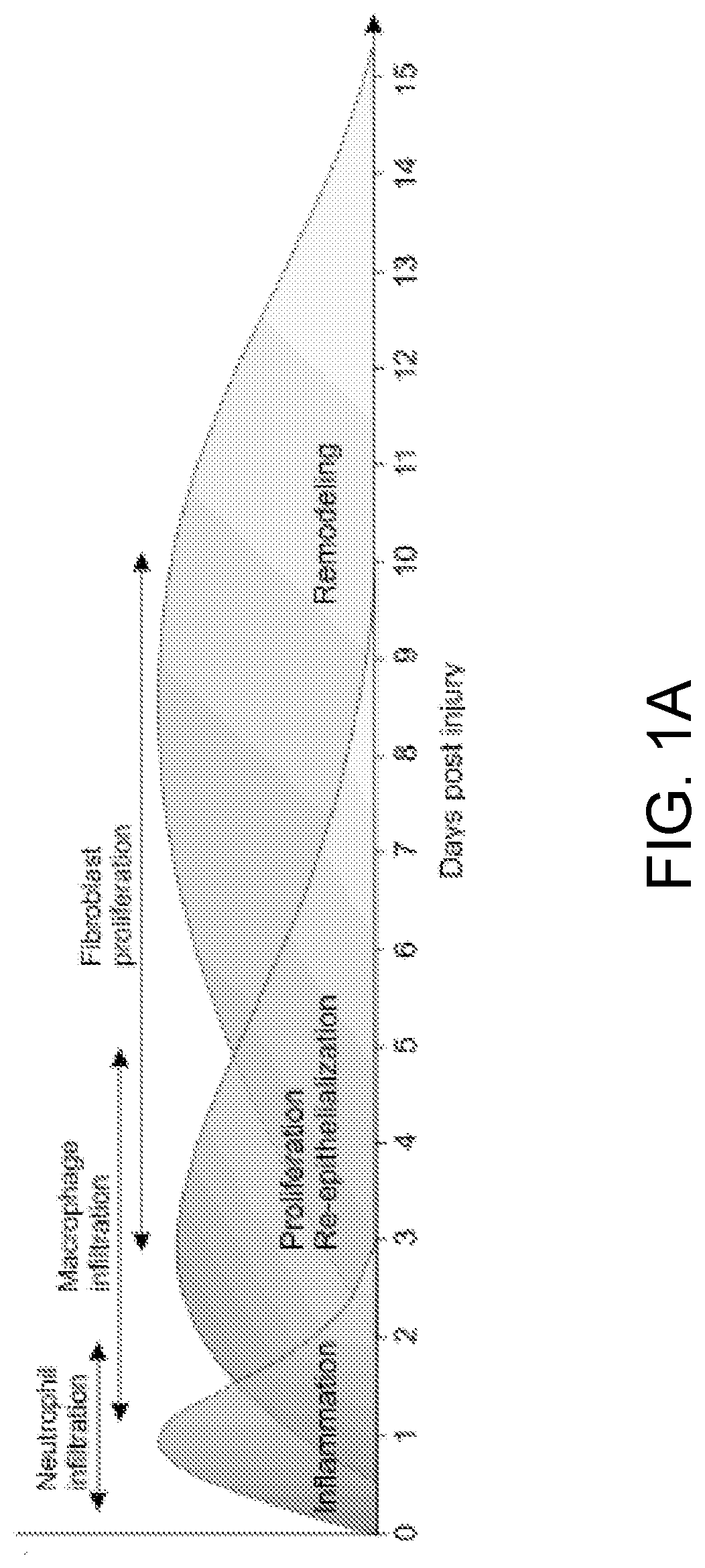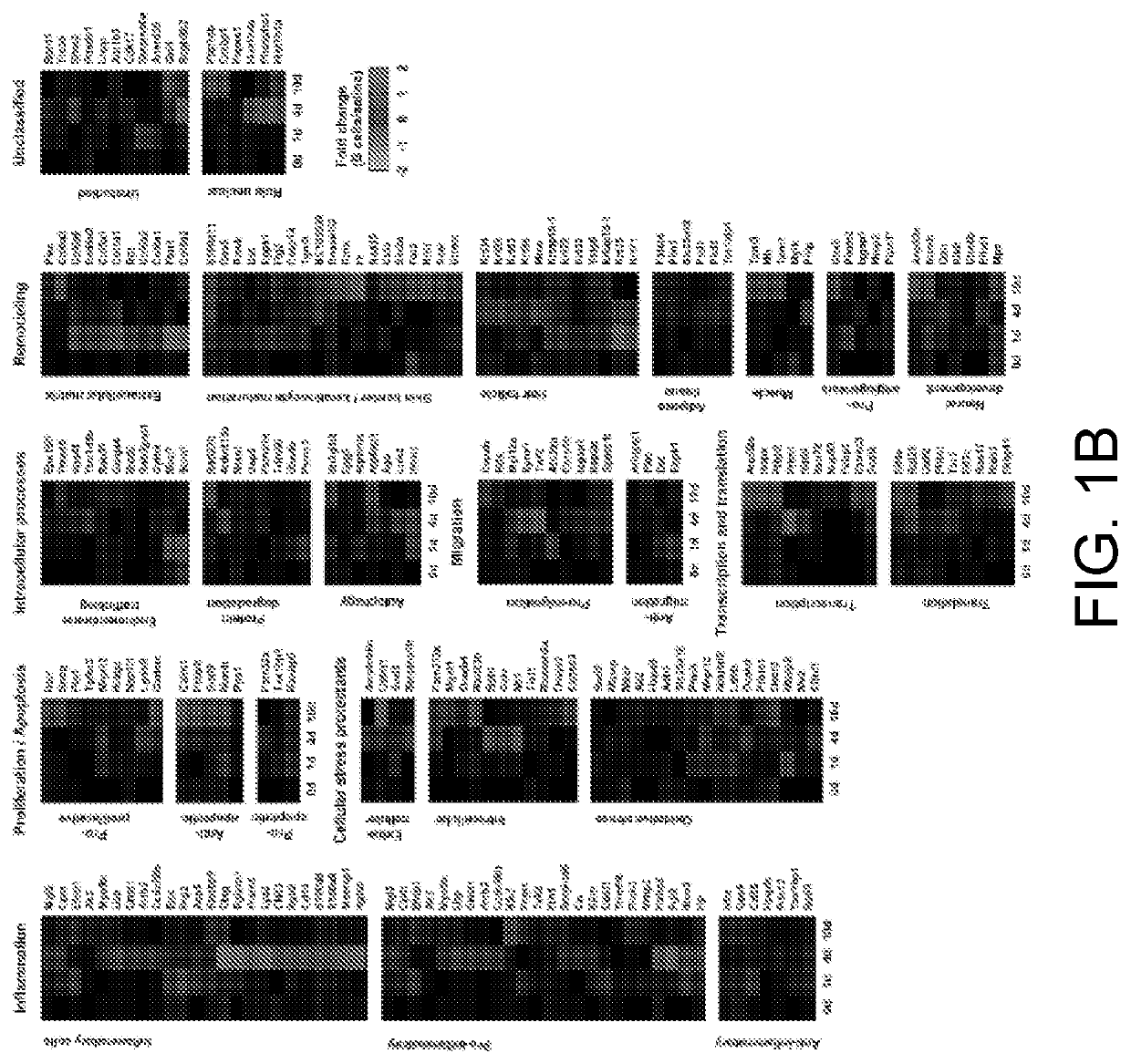B cell immunotherapy
a technology of immunotherapy and b cells, applied in the field of b cell immunotherapy, can solve the problems of ineffective treatment, high cost, and high cost of proposed treatments, and achieve the effects of rapid off-the-shelf treatment agent, rapid healing, and increased pro-regenerative efficiency
- Summary
- Abstract
- Description
- Claims
- Application Information
AI Technical Summary
Benefits of technology
Problems solved by technology
Method used
Image
Examples
example 1
B Cells Modulate Immune Infiltration and Response
[0267]This example, using isobaric-labeling multiplexed proteomics, illustrates a large-scale analysis of the molecular impact of B cells in wound healing.
[0268]Our data showed that B cell application has a significant homeostatic effect on the wound microenvironment, with a strong reduction in proteins associated with inflammatory response, as well as an increase in proteins associated with tissue growth and remodeling. By retrieving the applied exogenous B cells from the wound niche at various time points after application and examining the cell populations through multi-color flow cytometry, we determined that mature naïve B cells applied into a wound shift towards a regulatory phenotype characterized by expression of CD138 and the immune-regulatory cytokines IL-10, IL-35, and TGF-β. This Breg-like phenotype appeared transient, with a peak at 2 days after application. Moreover, the phenotype of monocytes and macrophages in the woun...
example 2
eatment Improves Outcome after TBI
[0300]This example illustrates that exogenously applied B cells significantly improved post-injury performance in a mouse TBI model.
[0301]Cerebral contusion causes neurological dysfunction mediated in part by inflammatory responses to injury. B lymphocytes are dynamic regulators of the immune system that have not been systematically studied in TBI. Using a mouse controlled cortical impact (CCI) model, we assessed a possible beneficial role of exogenously applied B cells on histopathological and functional outcome after TBI. Mice were injected intraparenchymally at the lesion site with 2×106 mature naïve syngeneic splenic B cells, then subjected to CCI. Control CCI mice received equal numbers of T cells or saline, and sham-injured mice (craniotomy only) were given B cells or saline. Sham-injured groups performed similarly in motor and learning tests. Injured mice administered B cells showed significantly improved post-injury Rotarod, Y maze, and Morr...
example 3
n of B Cal Immunotherapy in the SOD1-G93A Mouse Model of ALS
[0337]This example illustrates the safety and efficacy of intravenous (i.v.) B cell administration in a standard murine model of ALS, the SOD1G93A mouse.
[0338]Male and female transgenic SOD1G93A mice as well as equal numbers of sex-matched non-carrier controls (n=32 / condition) were treated starting at week 10 of life (day 72) with 5×106 B cells in saline (or saline control) on a weekly schedule for a total of 10 weeks. We found that B cell treatment delayed symptom onset (pG93A mice. Treatment with B cells was associated with a significant reduction in the relative numbers of injured / degenerating motor neurons in the lumbar spinal cord (p<0.05) at endpoint, even as total numbers of motor neurons were not changed with treatment. B cell treatment was not associated with any observable (behavioral and phenotypic) detrimental effects in identically-treated non-transgenic control wild-type littermates, which continued to gain we...
PUM
| Property | Measurement | Unit |
|---|---|---|
| Fraction | aaaaa | aaaaa |
| Fraction | aaaaa | aaaaa |
| Time | aaaaa | aaaaa |
Abstract
Description
Claims
Application Information
 Login to View More
Login to View More - R&D
- Intellectual Property
- Life Sciences
- Materials
- Tech Scout
- Unparalleled Data Quality
- Higher Quality Content
- 60% Fewer Hallucinations
Browse by: Latest US Patents, China's latest patents, Technical Efficacy Thesaurus, Application Domain, Technology Topic, Popular Technical Reports.
© 2025 PatSnap. All rights reserved.Legal|Privacy policy|Modern Slavery Act Transparency Statement|Sitemap|About US| Contact US: help@patsnap.com



